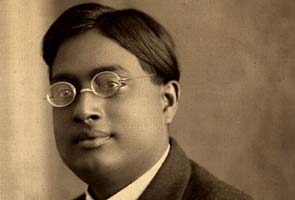Satyendra Nath Bose: For India, ‘God particle’ is as much boson as Higgs

New Delhi: The release on Wednesday of dramatic new data pointing to the existence of the Higgs boson “God particle” sent a special flutter of pride, mixed with frustration, through India’s scientific community.
 The “Higgs” of Higgs boson is well known to refer to Peter Higgs, the British researcher who in 1964 laid much of the conceptual groundwork for the presence of the elusive particle.
The “Higgs” of Higgs boson is well known to refer to Peter Higgs, the British researcher who in 1964 laid much of the conceptual groundwork for the presence of the elusive particle.
What is largely unknown, at least to non-specialists, is that the term “boson” owes its name to the pioneering work of the late Indian physicist, Satyendra Nath Bose.
Born during British colonial rule in 1894 in Calcutta (now Kolkata), Bose was a lecturer at both the universities of Calcutta and Dhaka.
In 1924, he sent a paper to Albert Einstein describing a statistical model that eventually led to the discovery of what became known as the Bose-Einstein condensate phenomenon.
The paper laid the basis for describing the two fundamental classes of sub-atomic particles — bosons, named after Bose, and fermions, after the Italian physicist Enrico Fermi.
While several Nobel prizes have been awarded research related to the concepts of the boson, Bose himself was never honoured by the Nobel academy.
Archan Majumdar, an astrophysicist at the eponymous Satyendra Nath Bose National Centre for Basic Sciences in Kolkata, said Bose’s name would be better known if his discoveries hadn’t been made during the colonial era.
“If India had been an independent nation he could have got more recognition than he has,” Majumdar said.
“Also, if he had the Nobel prize which he deserved more than many others he would have been more known, but unfortunately it didn’t happen.”
In 1954 Bose awarded the Padma Vibhushan — India’s second highest civilian honour. He died in 1974.





